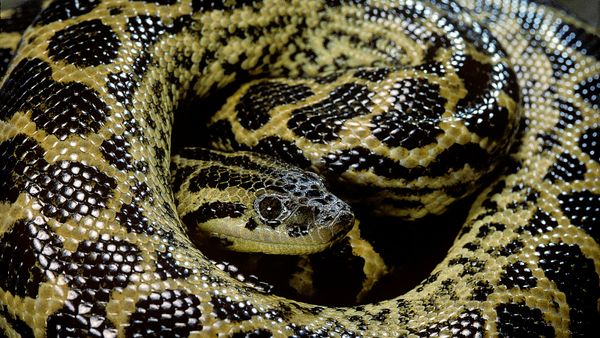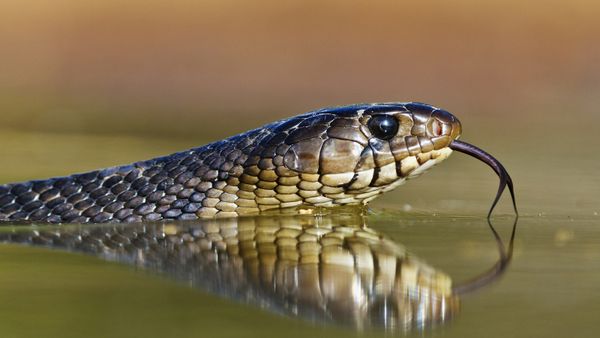The green anaconda is known for its massive size and distinctive physical features. It has a thick, muscular body built for constricting and subduing prey.
Its skin is a dark green color, providing excellent camouflage in the murky waters of the anaconda's rainforest habitat. This green coloration is patterned with black spots and stripes, which further aid in blending into the dense vegetation and shadowy waters.
The snake's head is small compared to its body, with eyes and nostrils positioned on top, allowing it to see and breathe while most of its body is submerged. To facilitate its aquatic hunt, the snake's scales are smooth, which assists in minimizing resistance while swimming.
Stretchy Adaptation
The green anaconda, like other large snakes, has a remarkable jaw structure facilitated by specialized ligaments that allow for significant stretching and flexibility. These ligaments, known as the mandibular symphysis, connect the two halves of the lower jaw.
Unlike in humans, where the jaw is rigidly fused, these ligaments in snakes are extremely elastic, enabling the jaw halves to move independently and spread apart.
Similar stretchable ligaments are present at the snake's quadrate bones, located at the back of the skull, further aiding in widening the gape. These stretchy ligaments are crucial for the feeding habits of the anaconda, as they primarily prey on sizable animals, like wild pigs, jaguars and deer.
The anaconda's heft and adaptability have contributed to the creature's terrifying reputation. But how could one not be frightened when encountering the largest snake in the world?
Size
These remarkable creatures can exceed 20 feet (6 meters) and have even been documented at lengths over 30 feet (9 meters). However, their size is not just about length; it's also about sheer mass. Green anacondas can weigh over 500 pounds (227 kilograms), making them significantly heavier than many other snake species in the world.
While other massive snakes — like the reticulated python, the Burmese python and the African rock python — are known for their length, green anacondas surpass them all in terms of bulk. Aside from earning the title of world's largest snake, their impressive size is advantageous in their aquatic habitat, where they often overpower large prey.
But they don't just dwell in the water.



